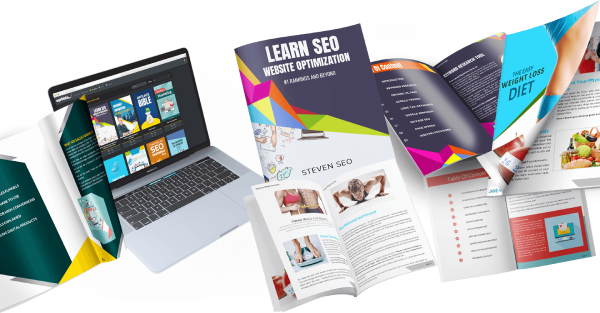Nowadays, blogging has reached a peak level of popularity, with new bloggers constantly entering the rapidly expanding community. If you have joined the world of blogging, it is likely that you want to express your passion for something, whether it be travel, food, video games, or cats. You may also be seeking to follow the trend of those who are making a significant income in the blogosphere, or a combination of both. Finding ways to monetize your blog, whether you have been posting for months or are just starting out, can be a daunting task. While there is no exact formula for monetizing a blog, bloggers have a variety of methods to choose from. By utilizing these techniques, you can achieve the same goal.
Direct Advertising
The initial and most evident approach to generate income from a blog is through direct advertising. By selling ads independently instead of relying on a network, you can earn a greater amount of money. Optimize your advertising space by strategically promoting items that are relevant to your content, as readers are more likely to click on ads related to the topic. Ads featuring images are considerably more effective than solely text-based ads, as are ads that move alongside your content. Bloggers typically charge a fixed fee, known as a CPM (cost per impressions), when selling to advertisers. Whether you decide to promote your own products or another service, this method presents an excellent opportunity to earn money.
Advertising Networks
For individuals who are not confident in selling their own advertising space, there are numerous advertising networks available to assist, although they do charge a fee for their services. Typically, these networks offer payment based on per-click or CPM. The most widely recognized advertising network in the blogosphere is Google AdSense, however, there are several other alternatives to consider such as Chitika, Kontera, and BurstMedia. It is recommended to experiment with multiple options and determine what is effective, often involving selling some of the advertising space directly and allowing networks to fill in the remaining space.
Affiliate Programs
One of the most frequently used methods of making money from blogs is through affiliation, wherein you provide your audience with products from external websites like Amazon. Whenever a product is purchased by someone, you receive a payment. It is advisable to ensure whether the product or service you endorse offers an affiliate program and join it. However, exercise caution while establishing affiliations, as numerous programs are inadequately managed.
Product Sales
If you are blogging about a topic, you may have the opportunity to make money by selling your own products. For artists, blogs can be effective in gaining an audience and selling their artwork. Even if you are not an artist, you can still sell a variety of items such as books, courses, software, clothing, accessories, and more if you have a dedicated audience and expertise. To get a better understanding of what is profitable in your niche, it can be helpful to examine similar blogs in the same market as yours.
Services & Speaking Gigs
It is interesting that one of the ways to make money from your blog is by engaging in external ventures. If you are able to attract an audience and establish your expertise in a particular niche market, you can leverage this to obtain external opportunities or provide additional services to your readers. Numerous bloggers who have generated profits from their blogs offer consulting or coaching services related to their subject matter, or even guidance on blog management. By utilizing your blog as a means of promotion, essentially serving as a comprehensive resume, you can secure additional freelance work and strengthen your authority in the field.
Sponsored Reviews and Paid Posts
To obtain payment from advertisers, you can also engage in sponsored reviews and paid posts. However, it is important to include a disclaimer when creating such a post and maintain your integrity by only providing recommendations that you genuinely believe would be advantageous for your readers. Should your blog gather considerable traffic, advertisers might approach you to create similar posts.
Membership and Premium Content
If you establish a significant and loyal audience, you can provide memberships and premium content exclusively for those who are willing to pay, despite most of the content you create being free. One approach to achieve this is by exclusively offering your top articles to members.
Optimize and promote your blogs
In order to have a successful blog, it is essential to have excellent content and a comprehension of your intended audience. It is important to attract visitors, drive clicks on your links, and gain subscribers. Therefore, writing for your readers and structuring your content in a manner that is appealing to both humans and search engines is crucial.
Do you have a specific goal for each article? Are you aiming for readers to click on your affiliate links, enroll in your email list, or explore your professional services? One option is to write a blog post that concentrates on a single affiliate partner, such as a product review. Alternatively, you could create a round-up post including links to multiple affiliates.
First, conduct thorough SEO research and select a combination of relevant terms and phrases pertaining to your subject matter. Enhance your SEO by adhering to established protocols, incorporating suggestions from professionals, and leveraging online marketing tools. It is crucial to also incorporate meta tags for your content and images, as this will enhance both SEO and accessibility.
Ensure that your blog is worth reading by offering valuable content and not just filler. If your blog lacks practical advice, it may cause readers to leave. Help your audience by evaluating sponsored posts and affiliate partners to provide genuine recommendations.
Title: Mastering Step-by-Step Thinking: Improve Your Problem-Solving Skills Introduction: Welcome to our comprehensive guide on step-by-step thinking! In this blog post, we will explore how to approach problems systematically, enabling you to enhance your problem-solving skills and find effective solutions. We’ll break down the text below into clear headings and incorporate visually appealing elements for better readability. Let’s dive in! Heading 1: Understanding the Power of Step-by-Step Thinking – Step-by-step thinking allows for a systematic and organized approach to problem-solving. – It helps break down complex problems into smaller, more manageable tasks. – By following a structured sequence of steps, one can analyze and solve problems more effectively. Heading 2: The Benefits of Step-by-Step Thinking – Improved clarity: Step-by-step thinking ensures a clear understanding of the problem at hand. – Efficient problem-solving: Breaking down problems into smaller steps enables efficient allocation of resources and time. – Enhanced decision-making: Analyzing each step allows for better evaluation of options and potential outcomes. – Increased confidence: A structured approach builds confidence and reduces feelings of overwhelm when facing complex problems. Heading 3: Developing Step-by-Step Thinking Skills 1. Define the problem: – Clearly articulate and understand the problem you are attempting to solve. – Use techniques like problem framing or mind mapping to gain a comprehensive view. 2. Analyze the problem: – Break the problem down into smaller, more manageable parts. – Identify the root causes and underlying factors contributing to the problem. 3. Generate potential solutions: – Brainstorm ideas and consider various approaches to tackle the problem. – Evaluate the feasibility and potential effectiveness of each solution. 4. Evaluate and select the best solution: – Assess each potential solution against predefined criteria. – Choose the solution that is most likely to address the problem effectively. 5. Implement the solution: – Develop an action plan and execute it systematically. – Monitor progress and make adjustments as necessary. 6. Assess the results: – Evaluate the outcomes of the implemented solution. – Reflect on the process, identifying lessons learned and areas for improvement. Heading 4: Strategies for Effective Step-by-Step Thinking 1. Use visual aids: – Utilize mind maps, flowcharts, or diagrams to organize thoughts and visually represent steps. 2. Break down complex problems: – Chunk large problems into smaller, manageable components. – Tackle each component individually, ensuring a comprehensive approach. 3. Seek alternative perspectives: – Engage colleagues or mentors to gain fresh insights and diverse viewpoints. – Collaborative brainstorming fosters innovative solutions. 4. Embrace iteration: – Accept that problem-solving is an iterative process. – Be open to revisiting steps or modifying the approach as new information emerges. Conclusion: Step-by-step thinking is a powerful tool that can revolutionize problem-solving skills. By systematically breaking down complex problems, you can enhance clarity, efficiency, decision-making, and overall confidence. Remember to define the problem, analyze, generate solutions, evaluate and select the best one, implement, and assess the results. Embrace strategies like using visual aids, breaking down problems, seeking alternative perspectives, and embracing iteration to further refine your step-by-step thinking abilities. Start incorporating this structured approach, and witness your problem-solving skills reach new heights!
After you have published a blog post, the work does not stop there. It is important to have a promotion plan for every blog post. For example, you can create social media posts and send emails to promote the blog. Additionally, it is crucial to moderate the comments on your blog and respond to readers. By having regular and meaningful conversations, you can build relationships with your audience.







